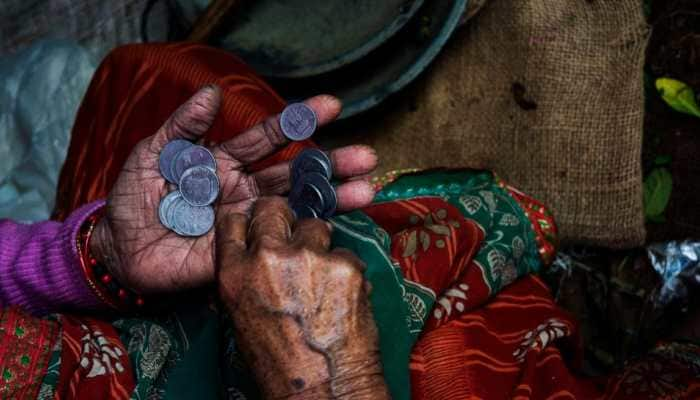Coronavirus COVID-19 patients with very mild symptoms can now opt for home isolation: Here's Health Ministry's guidelines
The Union Ministry of Health and Family Welfare on Monday (April 27) issued guidelines for home isolation of people with very mild coronavirus COVID-19 symptoms.
Trending Photos
)
The Union Ministry of Health and Family Welfare on Monday (April 27) issued guidelines for home isolation of people with very mild coronavirus COVID-19 symptoms.
According to the Union Ministyr, such patients with requisite self-isolation facility at their residence will now be allowed to remain in home isolation.
"As per existing guidelines, during the containment phase, the patients should be clinically assigned as very mild/mild, moderate or severe and accordingly admitted to COVID Care Centre, Dedicated COVID Health Centre or Dedicated COVID Hospital, respectively. However, very mild/pre-symptomatic patients having the requisite facility at his/her residence for self-isolation will have the option for home isolation," the ministry stated.
The ministry said that as per the eligibility for home isolation, the person should be clinically assigned as a very mild case/pre-symptomatic case by the medical officer and the patient should have the requisite facility at their residence for self-isolation and also for quarantining the family contacts.
"A caregiver should be available to provide care on a 24x7 basis. A communication link between the caregiver and hospital is a prerequisite for the entire duration of home isolation. The caregiver and all close contacts of such cases should take hydroxychloroquine prophylaxis as per protocol and as prescribed by the treating medical officer," it stated.
The Union Ministry also said that people must download Aarogya Setu app on mobile and it should remain active at all times.
The patient who opt for home isolation must agree to monitor his health and regularly inform his health status to the District Surveillance Officer in order to allow the surveillance teams to do further follow ups.
"The patient will fill in an undertaking on self-isolation and shall follow home quarantine guidelines," the ministry said.
The ministry's guidelines also said that the patient will seek immediate medical attention if serious signs or symptoms develop, including difficulty in breathing, persistent pain/pressure in the chest, mental confusion or inability to arouse, developing bluish discolourations of lips/face and as advised by treating medical officer.
The Union Health Ministry also said that patients under home isolation will end home isolation if symptoms are clinically resolved and the surveillance medical officer certifies him or her to be free of infection after testing,
Here's the guidelines in details:
Who can go for home isolation?
- Those who have been clinically assigned as a very mild case/ pre-symptomatic case by the treating medical officer. However, they need to fill in an undertaking on self-isolation agreement before doing so.
- They should have the required facility for self-isolation at home and also for quarantining the family contacts
-A caregiver should be appointed on 24 x7 basis, who will have to maintain communication with the hospital for the entire duration of home isolation.
- The caregiver and all close contacts of such cases should take Hydroxychloroquine prophylaxis as per protocol
- The Arogya Setu App should remain active at all times
-The patient will have to monitor his health and regularly inform the District Surveillance Officer of his health status for further follow up by the surveillance teams.
When to seek medical attention
Patient / Care giver will keep monitoring their health. Immediate medical attention must be sought if serious signs or symptoms develop. These could include
(i) Difficulty in breathing,
(ii) Persistent pain/pressure in the chest,
(iii) Mental confusion or inability to arouse,
(iv) Developing bluish discolorations of lips/face and
(v) As advised by treating medical officer
When to discontinue home isolation
Patients under home isolation will end home isolation if symptoms are clinically resolved and the surveillance medical officer certifies him to be free of infection after laboratory testing.
Instructions for care-givers
- Mask: The caregiver should wear a triple layer medical mask appropriately when in the same room with the ill person. Front portion of the mask should not be touched or handled during use. If the mask gets wet or dirty with secretions, it must be changed immediately. Discard the mask after use and perform hand hygiene after disposal of the mask.
- He/she should avoid touching own face, nose or mouth.
- Hand hygiene must be ensured following contact with ill person or his immediate environment.
-Hand hygiene should also be practiced before and after preparing food, before eating, after using the toilet, and whenever hands look dirty. Use soap and water for hand washing at least for 40 seconds. Alcohol-based hand rub can be used, if hands are not visibly soiled.
- After using soap and water, use of disposable paper towels to dry hands is desirable. If not available, use dedicated clean cloth towels and replace them when they become wet.
- Exposure to patient: Avoid direct contact with body fluids of the patient, particularly oral or respiratory secretions. Use disposable gloves while handling the patient. Perform hand hygiene before and after removing gloves.
-Avoid exposure to potentially contaminated items in his immediate environment (e.g. avoid sharing cigarettes, eating utensils, dishes, drinks, used towels or bed linen).
- Food must be provided to the patient in his room
-Utensils and dishes used by the patient should be cleaned with soap/detergent and water wearing gloves. The utensils and dishes may be re-used. Clean hands after taking off gloves or handling used items.
- Use triple layer medical mask and disposable gloves while cleaning or handling surfaces, clothing or linen used by the patient. Perform hand hygiene before and after removing gloves.
- The care giver will make sure that the patient follows the prescribed treatment.
- The care giver and all close contact will self-monitor their health with daily temperature monitoring and report promptly if they develop any symptom suggestive of COVID-19 (fever/cough/difficulty in breathing)
Stay informed on all the latest news, real-time breaking news updates, and follow all the important headlines in india news and world News on Zee News.
Live Tv







)
)
)
)
)
)
)
)
)
)
